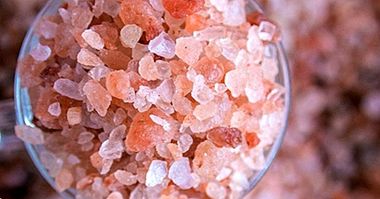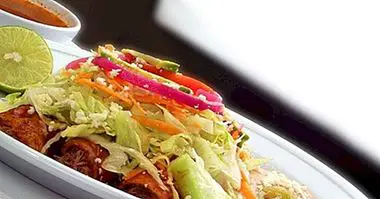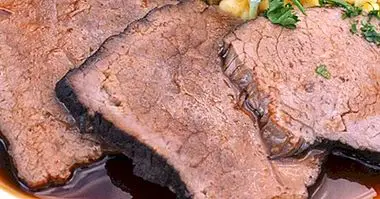What is the difference between food and nutrition?
It is common for many people use the terms "nutrition" and "nutrition" interchangeably ; however, and although both are closely related, they do not mean the same thing.
Nutrition is a vital process for human beings, through which our body takes advantage of those nutrients that we have ingested so that the organism works properly, for example, so that the cells remain alive and have the energy necessary to do their job well. Although sometimes we talk about human nutrition, animals and plants are also nourished. As we will see later, it is possible to talk about different forms of nutrition: autotrophic nutrition or heterotrophic nutrition are some examples.
Instead, food is composed of actions that we consciously carry out and on a voluntary basis, whose purpose is to select, prepare and ingest food.
In the following lines we will go into greater detail in the difference between food and nutrition and we will explain the different types that exist.
- You may be interested: "What are the 14 most nutritious foods that exist?"
What are nutrients and foods
To understand the difference between food and nutrition, it is ideal to begin by understanding the difference between food and nutrient. Foods are any nutritious substance or product that has as purpose to be ingested by human beings, whether they have been transformed in their entirety or not (for example, if they have been cooked).
The foods include:
- Fruits
- Vegetables and vegetables
- Milk and its derivatives
- Meat and sausages
- Fish and seafood
- Eggs
- Vegetables
- Cereals
- Nuts
- Sugars, sweets and sugary drinks
- Oils and fats
- Alcoholic drinks
- Water
- Chewing gum (According to the European Parliament, 2002)
Not included: feed, live animals (except those that are marketed for human consumption, for example, oysters), plants before harvest, medicines or cosmetics.
Instead, nutrients are the substances found in food and that they are useful for the organic metabolism . Nutrients are classified as macronutrients and micronutrients. The former include proteins, carbohydrates and lipids; and the second vitamins and minerals. Some experts include water within the group of nutrients, but exclude alcohol.
- Maybe you're interested: "15 tips to speed up metabolism and lose weight comfortably"
The concept of nutrition
Taking into account the definition of nutrients, nutrition are the unconscious and involuntary processes by which the body digests, transforms and makes use of the aforementioned nutrients. It also includes the process of eliminating the substances that are part of the ingested food and that the body does not need.
Nutrition is key to life, since without consuming food or water, we would die. Having said that, you can not talk about bad or good nutrition, for this would refer to food. If possible, instead, talk about poor nutrition.
On the other hand, there are two types of essential nutrition: the autotrophic and the heterotrophic.
1. Autotrophic nutrition
It happens when a living being Feeds after synthesizing inorganic substances . That is, they can only be made by those living beings that manage to produce their own food, for example, plants through photosynthesis (these living beings are called photolyto-autotrophic) or some bacteria that use chemical elements and are called chemolithotrophs . For example: bacteria.
2. Heterotrophic nutrition
The heterotrophic living beings they need an elaborate food source . Humans and other animals, fungi and much of the microorganism belong to this group.
Heterotropic nutrition can be divided into:
- Parasitic nutrition: a living being lives inside another that feeds and at the same time harms.
- Saprophytic nutrition: a living being obtains nutrients from the environment and decomposes them thanks to the action of enzymes.
- Holozoic nutrition: it is that of human beings. They eat solid foods and then digest them and get the nutrients they need.
exist three types of holozoic nutrition :
- Herbivorous nutrition: the living being eats vegetables.
- Carnivorous nutrition: the living being eats meat.
- Omnivorous nutrition: the living being eats vegetables and meat.
The herbivorous nutrition differs from the vegetarian diet, because the herbivorous nutrition is that in which the organism is biologically prepared to decompose the vegetables; and vegetarian food is one in which the person chooses to eat vegetables.
Food: why is not the same as nutrition
After observing the previous example, it is clear that food is a conscious and voluntary process, in which the person chooses what he is going to eat and how he is going to eat it. Likewise, feeding is an educable and modifiable act throughout life, which allows changing habits.
Some types of food are:
- Infant feeding : one that focuses on getting the best nutrition for children who are growing old.
- Feeding the pregnant woman : the most appropriate for the pregnancy process.
- Sports nutrition : a selection of foods that maximize the energy level and muscle recovery of individuals who practice sports or exercise.
- Healthy nutrition : eating habits or habits that help to have a life with greater physical health.
- Vegetarianism : vegetarianism is an ideology that influences eating habits, because these people basically consume vegetables and fruits. In addition to strict vegetarians, there are lacto-ovo vegetarians, who consume eggs and dairy as well as vegetables; and the lacto-vegetarians, who only take dairy products in their diet as well as vegetables ..
- Veganism : it is the ideology of not eating food products of animal origin, that is, not eating meat and fish products, nor eggs, dairy products or honey, but it goes beyond food; nothing that comes from animals is consumed.
Classification of nutrients
If you want to know more about the different types of nutrients that exist, you can read these articles:
- The 20 types of proteins and their functions in the body
- Types of fats (good and bad) and their functions
- Types of vitamins: functions and benefits for your body



















